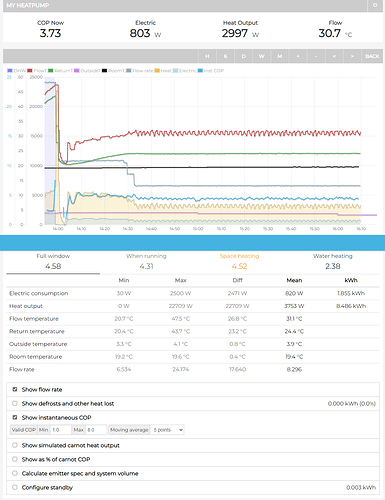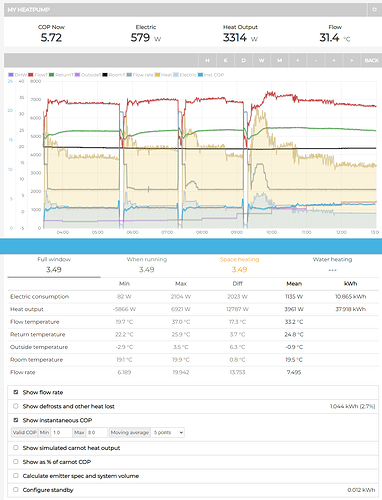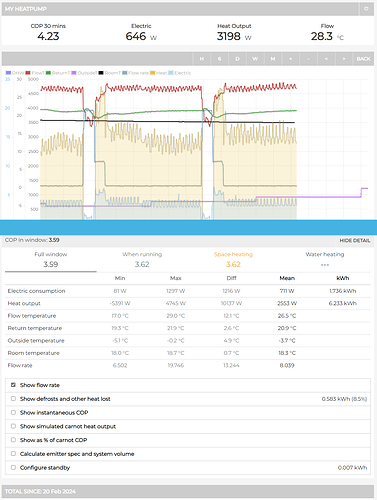If my radiators were bigger then my heat pump would hit the requested dT at my set flow temperature, as long as the return temperature was equal to, or greater than the room temperature.
Right now, my flow temperature is set at 31c.
The water is actually entering the house at an average of 31.1c, so bang on.
The return temperature is 24.1c
So my dT is 7c and my flow rate is as low as it will go.
Here it is, as steady as it gets (pretty much)
The flow temperature is not increasing to achieve the requested dT of 10c.
The dT will get bigger if the heat loss increases.
It is the only thing that can change my actual dT as the flow temperature and flow rate are fixed.
The electrical input varies as necessary to keep the flow temperature at 31c.
I have an overshoot of up to 4c set but the heat pump doesn’t use it as the dT is acceptable to allow the heat pump to run continuously.
If it gets colder outside (when!) the dT will increase because the return temperature will drop.
The flow temperature and flow rate will remain as they are now.
The electrical input will increase to maintain flow temperature of 31c and provide the extra heat I am now producing (same flow rate but bigger dT = more heat).
If I exceed the set dT of 10c then the flow rate will increase to hold it at 10c.
You can see this here
This is what happens if I change to fan coils and a dT of 5c, a wild unstable mess, nothing is steady!



